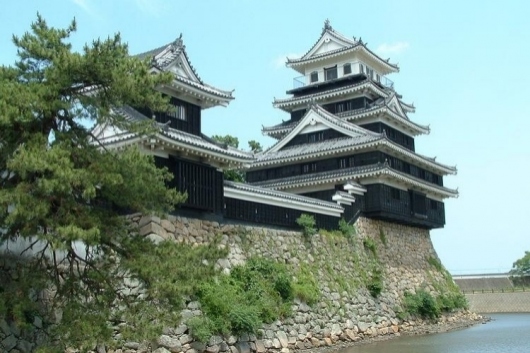●History of the House of Okurdaira And Nakatsu Castle●
In 1575 (third year of Tensho) the Okudaira family, which up until then had existed as one of the smaller wealthy samurai families in Mikawa's mountainous region, would become known throughout Japan.
It began with the Battle of Nagashino on the plain of Shitaragahara, in which the Oda and Tokugawa allied forces expelled and destroyed the forces of Takeda, in a ferocious battle that is said to have forever changed Japanese history. The sacrifice made by Okudaira retainer Torii Suneemon prompted Oda Nobunaga to award highest military honors upon the next generation Okudaira family member, Okudaira Sadamasa.
At this time, Nobunaga awarded Sadamasa with a single letter of his name: 'Nobu,' and thereafter he became known as 'Nobumasa.' Further, Nobumasa became wed to Tokugawa Ieyasu's eldest daughter, Princess Kame, and proceeded to make several great military achievements befitting of a legendary warrior, taking no shame in the name of son-in-law, and contributing greatly to the creation of Tokugawa's new bakufu government. Nobumasa's children, starting with Iemasa, would strive and succeed in living up to his achievements. The Okudaira family managed to consolidate their distinguished position tied with the Tokugawa as hereditary vassals.
Many years passed, until 1717, the second year of the Kyoho era. The eighth Tokugawa Shogun Yoshimune, who had only just taken up his post the previous year, was driving for a reformation of the shogunate. Desiring greater control of West Japan, he requested Masashige, 7th generation Okudaira, to reside in Nakatsu Castle in the Buzen Province. This meant a promotion and increase from his previous dominion of Miyazu, Tango Province by 10,000 koku, to a total 100,000 koku. Yoshimune was the great-grandchild of Ieyasu, and he is said to have worshipped his exalted great-grandfather constantly. He even modeled his own government on Ieyasu's political method, stating: "All matters are settled according to Gongen-sama (Ieyasu)." He must have held high expectations of Okudaira Masashige, who shared the same Tokugawa blood.
There followed many great and wise Okudaira leaders, notably Masataka, 11th generation Okudaira, who contributed to the advancement of Dutch studies in Japan. The Okudaira continued to live in Nakatsu castle and watch over the castle town for 154 years until 1871 (fourth year of Meiji) when the 15th generation Okudaira Masayuki met with the abolition of the han system. At the time of the abolition of the han system, almost all buildings inside the castle were completely destroyed. Only the palace was preserved as a Nakatsu office building in Kokura Prefecture.
However, during the Satsuma Rebellion in 1877 (tenth year of Meiji), the palace also burned down. After the War and political turmoil arising from Japan's defeat, the former feudal lords of the Okudaira became the center of power in 1964 (39th year of Showa), and together with donations from the citizens of Nakatsu they built a castle tower.
Since then, the new castle has lasted through the Showa and Heisei periods as both a symbol of pride and as a sight-seeing area for visitors to Nakatsu city.
Now, in 2011, fuelled by the company charged with upholding the spirit of the Okudaira clan, newly-emerged Nakatsu Castle (Museum of the Okudaira) starts its new life holding a variety of events and projects for the citizens of Nakatsu city.
Information
| Area |
Nakatsu City |
|---|---|
| Genre |
Museums Other |
| Location | 871-0050 Ninocho Honmaru, Nakatsu City, Oita Prefecture |
| HP | http://www.nakatsujyo.jp/ |
| Access |
・15 minutes walk from JR Nakatsu Station ・10 minutes by car from the Sadatome IC |
| Parking | Yes |
| Contact |
Nakatsu Castle (Okudaira Family History Museum) TEL:0979-22-3651 |




